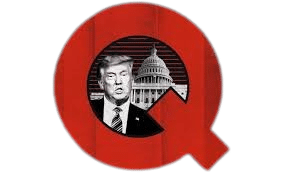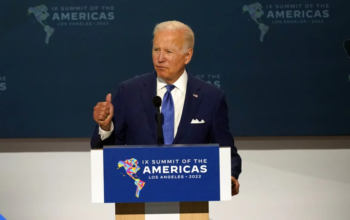The U.S. annual inflation rate surged to 8.6 percent in May, topping the market estimate of 8.3 percent.
According to data from the Bureau of Labor Statistics (BLS), the inflation rate rose 1 percent on a month-over-month basis.
The core inflation rate, which excludes the volatile food and energy sectors, climbed 6 percent year-over-year, higher than economists’ expectations of 5.9 percent. Core inflation jumped 0.6 percent month-over-month.
All of the inflation indexes ran high in May, with food prices soaring 10.1 percent and energy increasing 34.6 percent.
New vehicles jumped 12.6 percent, while used cars and trucks rose 16.1 percent. Apparel prices swelled 5 percent.
Shelter costs swelled 5.5 percent, transportation services increased 7.9 percent, and medical care services rose 4 percent.
In May, meat prices remained expensive as beef (+10.2 percent), pork (+13.3 percent), ham (+11.1 percent), and chicken (+17.4 percent) have all surged.
Eggs spiked 32.2 percent, while milk advanced 15.9 percent. Fruits and vegetables increased 8.2 percent.
Coffee rose at a remarkable pace of 15.3 percent. Roasted coffee jumped 15.6 percent and instant coffee increased 12.9 percent.
With the energy index, fuel oil surged 106.7 percent, gasoline rose 48.7 percent, and electricity costs jumped 12 percent.
The U.S. financial markets reacted negatively to the data. In pre-market trading, the Dow Jones Industrial Average fell nearly 500 points and the Nasdaq Composite Index tumbled more than200 points. The S&P 500 dropped about 1.6 percent.
The U.S. Treasury market was mixed, with the benchmark 10-year yield topping 3.05 percent.
The U.S. Dollar Index (DXY), which measures the greenback against a basket of currencies, surged 0.8 percent to 104.02, from an opening of 103.34.
Has Inflation Peaked?
One of the major discussions today is if inflation has peaked.
Over the last couple of months, some components of the U.S. marketplace have eased, particularly used car prices. However, many other goods and services have continued to increase in cost, especially on the energy front.
The persistent jumps in a broad array of energy commodities, including crude oil, natural gas, gasoline, and diesel, could send the consumer price index (CPI) higher in the coming months.
Mohamed El-Erian, a top economist and chief economic advisor at Allianz, is doubtful of an “inflation top.”
“Brent #oil ended the trading session at $124, up 3% on the day (WTI at 123),” he wrote in a tweet on Wednesday. ” If this recent leg up in oil prices persists, it will put in serious doubt the call of an “#inflation top” that quite a few on #WallStreet embraced.”
Over the last month, West Texas Intermediate (WTI) and Brent crude prices have advanced about 10 percent. Natural gas soared 16 percent. The national average for a gallon of gasoline is nearly $5, while diesel is homing in on $6, data from the American Automobile Association (AAA) show.
Moving forward, inflation will need energy prices to take a breather, says Ipek Ozkardeskaya, a senior analyst at Swissquote Bank.
“For inflation to ease persistently, we need to see energy prices soften,” she said in a research note on Friday.
El-Erian reiterated this stance in an interview with Bloomberg Television on Thursday, noting that the June month-on-month headline reading could be worse than the May report.
“Those who boldly said inflation has peaked and is coming down may have to change their minds,” he said.
Euro Pacific Capital chief economist and strategist Peter Schiff rejected the premise that the U.S. is at peak inflation, telling Fox Business that “inflation is going to get much worse.”
“This inflation is just getting started. I mean, we’ve had it for a long time in financial assets, but now it’s finally moved into consumer goods and it’s got a long way to go,” he said.
Other U.S. policymakers are waiting for more data to determine if the economy has seen the worst of higher prices or if inflationary pressures will subside.
Loretta Mester, the president of the Federal Reserve Bank of Cleveland, told CNBC last week that she has not seen enough evidence to suggest inflation has peaked.
“I don’t want to declare victory on inflation before I see really compelling evidence that our actions are beginning to do the work,” Mester stated.
The rate-setting Federal Open Market Committee (FOMC) will hold its two-day June policy meeting on June 14–15. According to the CME Group FedWatch tool, it is widely expected that the U.S. central bank will pull the trigger on a 50-basis-point interest rate hike.
During a Senate Finance Committee hearing on Wednesday, Treasury Secretary Janet Yellen conceded that the United States would endure “unacceptable levels of inflation” for some time, although she “very much hopes that it will be coming down now.”
In separate testimony in front of the House Ways and Means Committee hearing, Yellen acknowledged that she “probably could have used a better term than transitory” when discussing inflation.
‘Nowhere to Hide’
U.S. families are paying an average of $311 more per month for goods and services, according to recent estimates from Moody’s Analytics.
Last month, a CNBC + Acorns Invest in You survey, conducted by Momentive, learned that many consumers are cutting back on dining out, reducing their driving, canceling a trip, and ending monthly subscriptions.
Because inflation is broad-based, post-pandemic economic conditions have “left consumers nowhere to hide,” says Greg McBride, the senior vice president and chief financial analyst at Bankrate.
“The biggest increases are coming in categories that are absolute necessities—shelter, food, and energy,” McBride told The Epoch Times. “This is why we’re beginning to see signs of strain among consumers that are dialing back discretionary spending or looking to economize as much as possible.”
The best strategy that consumers and investors could employ, particularly in a stagflation environment, is turning to gold and silver, says William Stack, a financial advisor at Stack Financial Services.
According to Stack, these precious metals are some of the top-performing assets amid stagflation.
Although silver has tumbled about 7 percent year-to-date, gold has held steady with a gain of nearly 1 percent. Both metal commodities have outperformed the leading U.S. benchmark indexes.
“Historically, gold and silver have continued to do well even in the years immediately following stagflationary periods, increasing 5–8x in price over a 3–5 year period,” Stack told The Epoch Times.
“Conditions appear to be similar in many ways and more extreme in some ways. We recommend clients and retirees protect themselves by owning insured equity-linked accounts that protect their principal from market declines while allowing the earnings potential to keep up with inflation and saving a portion (10-20 percent) of their savings in precious metals as well.”
According to the Federal Reserve Bank of New York’s (FRBNY) monthly Survey of Consumer Expectations, one-year median inflation expectations tumbled to 6.3 percent in April, down from 6.6 percent in March.
Source From: The Epoch Times




